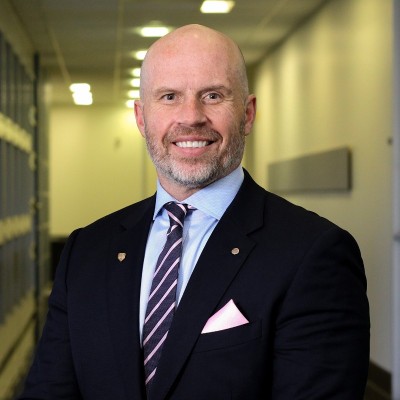Reinventing Empty Buildings via Office-to-Lab Conversions
Across the United States, cities and communities are being significantly shaped by three core driving forces. First, there are millions of buildings constructed before the year 1970. Secondly, due to the COVID-19 pandemic, there’s an expansive amount of vacant office space, tallying up to billions of square feet. And lastly, trillions of dollars are being invested into sustainable environmental solutions. These three factors capture many individuals’ attention, particularly real estate developers and owners. Their primary concern revolves around discovering valuable and innovative next-use options for the existing buildings, aligning with the evolving needs and goals of the modern era.
Some of these spaces are undergoing transformation to meet the growing need for research and development space. This involves converting urban, mixed-use commercial buildings, including big-box retail, office, and light industrial spaces, into research labs to foster innovation in the rapidly changing business landscape.
In this new market reality, efficiently adapting empty commercial space for the expansion needs of research and development is valuable on many levels. As a result, this approach sparks a multitude of opportunities for innovation and collaboration across communities and cities while considering the economic realities of lab costs and the environmental benefits of building reuse.
Why Research Hubs?
Converting commercial space to laboratory space is important for many reasons. The emphasis on life sciences can pivot a building toward one of the most viable categories in real estate. The expansion of research facilities has been driven by several factors, including growth in advanced industries like pharma and biotech, an increase in graduates working in life sciences, and the growing importance of clinical research in the healthcare industry.
Considering these factors and others, there is a growing need for more space to accommodate life sciences labs. Existing lab space for life sciences research and development is already at a premium (upwards of $1,200 per square foot in coastal markets and $600 per square foot in the Midwest). More space is required to accommodate the growing number of startups in the industry, as well as incentives from government and institutional funding sources.
There are several stages in the lifecycle of a research company, including research, development, production, and commercialization. In a perfect world, each one of these stages would have its own facility or phased expansion on a project. However, with the high cost of lab space driving down the availability of new facilities, lab companies often can’t afford new facilities until later in their life cycle, resulting in more labs focused on mature product phases and fewer labs focused on early product research and development. By utilizing empty commercial spaces for a lower lab build cost, companies can leave more resources on the table for earlier, low-risk research and development stages in the absence of funding and seed capital.
Are Office-to-Lab Conversions Economically Viable?
It is a growing reality that ground-up buildings are not economically viable with current lending interest rates, inflation, and construction costs. This is where hiring an integrated design company with expertise in planning, development, and life sciences can help.
At LEO A DALY, we have a model and method for upholding economic values in our redesign process. Take Xcel Energy, for example. Before coming to us with a desire for a lab space, the company committed to becoming carbon-free by 2050. By utilizing solar technology and electric heat instead of gas, we helped Xcel Energy reach its sustainability goals. The team instituted innovative and affordable solar preheat technologies and reduced the need for artificial light in the building by 35%.
Energy-efficient lab conversions are possible. Expert teams will conduct a building assessment before conversion to ensure viability before any plans are made. Our LabMod design framework exemplifies the economic benefits of converting office, retail, and industrial spaces into labs, catering to the early phases of research. The design is flexible for both single or multitenant incubator spaces. Unlike other real estate solutions, it’s engineered for efficiency with integrated, nonredundant building systems that can be owner-managed, providing a multitenant solution based on different lab needs.
design framework exemplifies the economic benefits of converting office, retail, and industrial spaces into labs, catering to the early phases of research. The design is flexible for both single or multitenant incubator spaces. Unlike other real estate solutions, it’s engineered for efficiency with integrated, nonredundant building systems that can be owner-managed, providing a multitenant solution based on different lab needs.
Essentially, LabMod facilitates a cost model for a range of cost-sensitive startups and lab conversions, introducing a faster product to the market for lab spaces, seldom seen except in a few coastal areas. This framework actually makes lab conversion a viable solution to the growing volume of empty buildings on the market.
facilitates a cost model for a range of cost-sensitive startups and lab conversions, introducing a faster product to the market for lab spaces, seldom seen except in a few coastal areas. This framework actually makes lab conversion a viable solution to the growing volume of empty buildings on the market.
What Design Considerations Are Architects Looking For?
Building designs must be considered to ensure commercial spaces can be adapted for research. Architects will look for buildings with the appropriate base utilities, such as electricity, a gas line, and water. They look for buildings with minimum floor-to-ceiling dimensions to accommodate lab systems such as exhaust and hoods, right-sized structural bays for lab modules, and deep enough floor plates for efficient lab layouts. Conversion can be challenging but not impossible if any of these elements are subpar. A quick review using LabMod is an efficient place to start for any client.
is an efficient place to start for any client.
Additionally, architects want to ensure the buildings offer a distinctive and branded experience to skilled employees, visiting businesses, and clients. When converting office and commercial spaces into research lab facilities, architects aim to design a functional lab that effectively showcases the company identity and values throughout the building.
What Industries Can Benefit From Office-to-Lab Conversions?
The primary industries that can benefit from empty commercial space are life sciences and medtech. Medtech often has slightly lower investment and can be handled with traditional infrastructure combined with off-the-shelf building solutions. Biotech solutions are more complex conversions due to the need for wet labs but can be highly profitable once fit out. Advanced manufacturing and pharma are other high-value beneficiaries of lab conversion strategies.
Investment backing also determines which institutions and industries can move forward with conversion. The realm of laboratory spaces is diverse. There are around a dozen different types, each requiring a certain level of investment commitment. Investments are notably emerging from the private sector, often hinging on the success of a single medical device product. These cases usually involve less complex build-out processes. However, when these projects are associated with larger institutional clients, such as Mayo Clinic, Fortune 500 partners, or large university systems, the build-out becomes more complex due to the substantial backing they receive and quicker product-to-market expectations tied to the funding.
Essentially, the nature of research initiatives and the industries they cater to are closely tied to the source of the seed capital and the entities supporting the launch.
How Does the Shift Toward Research Hubs Impact the Surrounding Community or Neighborhood?
Not only do these lab conversions benefit startup businesses and large research and development partners in life sciences, but they also provide a unique benefit to the surrounding community.
Often, companies look for offices in suburban areas with the space to build out over time. These buildings can attract a certain profile of highly skilled, highly educated workers to an area, elevating the tax base and creating strong incentives for increased housing, better-funded local schools, and local amenities. There is also the constellation effect of subsidiary life sciences companies, which often locate around each other, spurring job growth and additional startups.
One of our studios in Minneapolis, Minnesota — often dubbed the “Silicon Valley of Medtech” due to its high concentration of medical technology companies — is at the heart of this town. The region surrounding the Twin Cities hosts notable firms such as Medtronic, Boston Scientific, Stryker, Takeda, and 3M. Over time, these companies have spawned numerous other ventures as their brands and employees evolved, further enhancing the region’s reputation as a medical technology and innovation hub.
Given the prevalence of vacant commercial office spaces and the pressure to provide new space for life sciences businesses across the country, architects are directing their attention toward transforming these spaces into research labs. This transition is an imaginative leap into the future of urban development and scientific innovation that supports smart reuse solutions while promoting innovation and community growth. Utilizing practical design frameworks such as LEO A DALY’s LabMod , these conversions can be achieved in a cost-effective and environmentally friendly manner, yielding valuable results.
, these conversions can be achieved in a cost-effective and environmentally friendly manner, yielding valuable results.
Edward Benes is president and deputy CEO of Leo A Daly Company. He’s been with the company since 2012. As deputy CEO, he assists Chairman and CEO Leo A. Daly III in developing strategy and operations for the firm. He is responsible for managing the company’s business operating groups as well as overseeing the company’s legal, human resources, and finance functions.
With more than 28 years of technical and lab experience, Steven Andersen’s broad range of lab and research development design expertise offers valuable insight to deliver inventive and efficient solutions for complex research programs. He identifies laboratory operation requirements, project goals, and, most importantly, unique product development needs to make sure lab spaces are places for people doing some of the world’s most important work. Steven is deeply familiar with the building system needs and all levels of laboratories and directly integrates the engineering team for all critical building systems.
Leif Eikevik extends 17 years of commercial real estate and design experience to elevate the value of buildings in cities across the country. With a focus on labs and research and development facilities, he is skilled in guiding clients through the full development process, including project planning and visioning, budget alignment, branding, and identity. Leif’s understanding of real estate and the complex needs in commercial and laboratory design make him a valuable advisor to clients and owners who need to align their goals with a future cutting-edge facility.



source https://csengineermag.com/reinventing-empty-buildings-via-office-to-lab-conversions/
تعليقات
إرسال تعليق